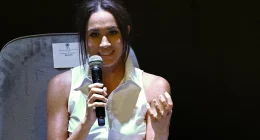When Governor Hochul and state lawmakers approved New York’s latest budget, they pushed spending to its highest level in history.
New data about the state’s financial picture show they didn’t think enough about the future.
A new budget projection shows the state expects expenses to outpace revenues by $9 billion beginning next April.
That gap will swell to $13 billion the year after.
To put those numbers in context, New York’s budget this year (excluding federal aid and borrowing) is $125 billion — about $23 billion more than it was before the pandemic (notwithstanding some Albany accounting gimmicks).
Hochul and state lawmakers appear to have been emboldened by last year’s unexpectedly high tax receipts, which gave rise to assumptions that future receipts would remain strong.
Those forecasts, however, have been pared back significantly in recent weeks, after state tax receipts for April came in far below expectations.

Albany doesn’t have many good options on the revenue front.
Lawmakers hiked both personal income and corporate taxes in 2021, and undoubtedly risk greater outmigration of businesses and high earners if rates rise further.
Instead, lawmakers need to re-evaluate the spending choices — or lack of choices — that led them to abandon whatever restraint they had shown in the last decade.
And they should start with two sacred cows:
Legislators’ top focus should be on New York’s costliest-in-the-nation public schools, which spent over $26,000 per pupil during the 2020-21 school year, or 85% more than the national average.
Albany’s aid for school districts exploded from $19 billion in 2011-12 to $34 billion set to go out next year.

At the same time, the state’s education standards have been significantly weakened, leaving taxpayers and students getting less for more.
Read Related Also: What We Know About Pete Davidson's Reported Check-In To Rehab
Freezing school aid at the current level, instead of allowing automatic increases, would save the state upwards of $2 billion in the first year alone.
Bringing school aid back to where it stood four years ago would eliminate the bulk of the state’s looming budget gaps in each of the next three years.
And while the teachers unions and others claim such cuts harm children, New York spent the last generation proving that increasing spending doesn’t create better results.
The other major area of concern has been Medicaid, the joint state-federal healthcare program for the poor and disabled.
Along with school aid, it makes up about half the state budget, and New York’s Medicaid spending is poised to surge 13% this year, following a successful pressure campaign by hospitals and healthcare unions.
Albany, during Governor Cuomo’s first term, had made considerable progress in controlling and even reducing Medicaid costs.
But the key to that success — a cap that limited spending growth to healthcare cost inflation — has been poked full of holes in recent years. Returning to the policies and practices that tamed Medicaid a decade ago will go a long way toward stabilizing the state’s fiscal footing.
Arguably New York’s most glaring problem with Medicaid has been with personal care, under which aides are paid to help disabled enrollees with non-medical tasks such as eating, bathing, housekeeping and shopping.

Due to lax standards and generous benefits, New York’s program spends almost as much on personal care as the other 49 states combined — $12 billion annually, split between state and federal taxpayers.
State officials have a responsibility to tackle these budget gaps, but there are other reasons for them to look skeptically at the bulge in key programs.
The runaway spending in both schools and Medicaid in many ways reflects state officials choosing appropriations over attention.
It’s likely the state could get both better healthcare and education outcomes by holding these programs to realistic standards based on peer states. New York, for instance, spends 30% more per K-12 student than Massachusetts, but the Bay State routinely posts equal or stronger student performance in national standards.
The sooner Governor Hochul and state lawmakers get to work confronting the state’s budget gaps, the more room they’ll have to undertake the sort of thoughtful structural reforms Albany has been avoiding.
Tim Hoefer is the president & CEO of the Empire Center for Public Policy in Albany.







